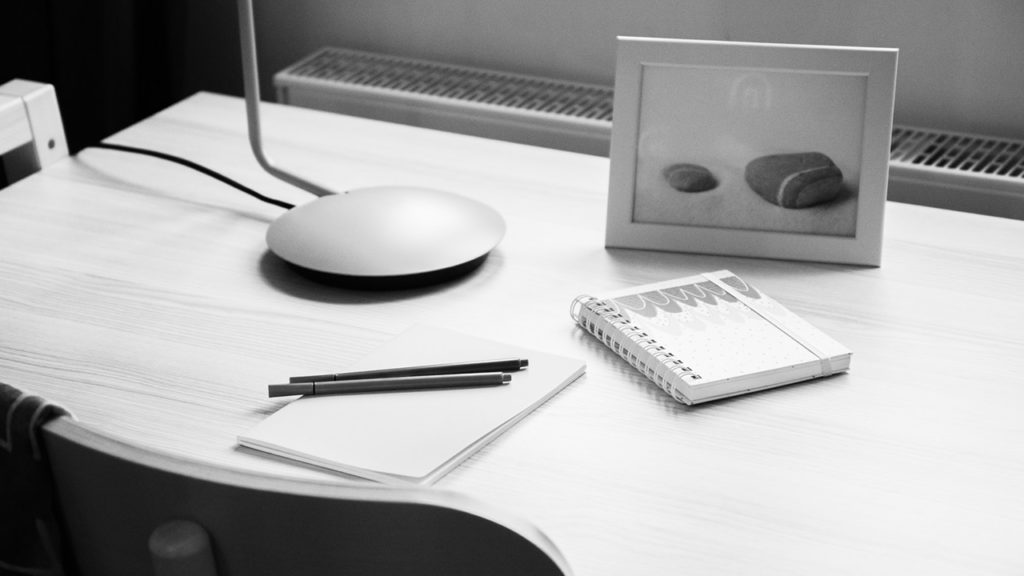
We’ve all done it. We start off with the best of intentions to work out regularly or to write daily. The first couple of weeks go great. At some inevitable point, we have a busy day or something comes up—and we fall off. Keeping up a new habit can be hard, but we can significantly improve our chances when we set ourselves up the best we can with intentional readiness.
With intentional readiness, we can reduce the friction and increase the ease in which we do the thing we’ve set out to do. That way, it’s easier to do the thing as planned—even when the unexpected happens or when we’re grumpy or tired. This concept is the opposite of intentional friction—what Anthony has shared—a Break the Twitch concept of adding more difficulty around an action you want to do less of.
A Tool For Change
Back in 2014, I was working full-time in a career that wasn’t right for me. In general, things were fine. I got along with my manager and team members in the office and across the world. I had set boundaries and implemented a work-life balance that was working okay. Even though I told myself that I had a lot to be grateful for, I felt hopelessly stuck and exhausted. Knowing that I was on the wrong career track took a heavy emotional toll on me. I had listlessly looked for other jobs in different fields, but nothing really stood out to me. In the absence of knowing what to do next, I didn’t want to keep on doing the same thing.
To help with the stagnancy I felt, I decided to meditate for an hour every day for three months. Ambitious, I know—not quite what I’d recommend for building a new habit. But I thought meditating for a long period each day would help with the stress; I also hoped some additional clarity would come out of it. I was determined to take on the challenge.
So, I cleared out a spot in the spare bedroom and laid out a yoga mat. I decided that since I was new to meditation, I’d allow myself different variations—listening to guided tracks, meditating with music and without music, going through book exercises, simply breathing, staring at the wall, and even journaling. I had everything for these variations readily accessible for whenever I sat down on the mat. Every night, I sat down on the mat, and the practice began. As long as I did one of the options on the mat for 60 minutes, it counted.
Sticky Status Quo
Unsurprisingly, it was quite difficult to meditate for an hour every day. It would’ve been much easier to turn on the TV or browse the internet like I was accustomed to doing most evenings.
I ended up meditating for an hour a day successfully for a little over two months before I decided to stop. While I didn’t do the full three months, the length of time I did was still an accomplishment. Meditating regularly was easier with a clear intention, with everything ready to go, and with a specific time slot to do it. Even better, doing this helped me gain more clarity. Through all those hours of reflection, I gathered the courage to make a plan to leave my job in the next six months.
The reality is, it’s often the easiest to stick to what we’re accustomed to doing. Meaning that without greater intention and preparation, it’s much harder to build and sustain new habits—especially with life’s distractions and curveballs.
Both Anthony and I have used intentional readiness and intentional friction to significantly change our lives over the years. We use readiness to make it easier to do the things we want to prioritize. Alternatively, we use friction to make it harder to do the things we want to deprioritize.
Intentional Readiness, Defined
Intentional readiness is the practice of preparing and setting up for the action you want to do more of, so it’s easier to do the action when the time comes.
There are three components to intentional readiness—setting your intention, planning and preparing, and scheduling.
1 / Set your intention
It starts with setting the intention. When setting your intention, the more specific you make it, the better. As an example, this could be wanting to eat more vegetables during the week. Even better would be eating one serving of vegetables Monday through Friday.
2 / Plan and prepare
The preparation part is gathering and preparing all the things you need for eating more healthy vegetables. This would include making a list of the vegetables you want to eat, shopping for the vegetables at the grocery store, and then washing, cutting, and storing them in ready-to-go containers in the fridge.
This is the most time-consuming part that many of us skip altogether or scramble to do when we think about taking action. Not having certain things prepared and set out beforehand only adds to the resistance of starting on the task or in this case, eating healthy vegetables. It increases the chances you’ll abandon the effort or postpone it until later.
3 / Schedule it
The final part is scheduling a specific time on the days of the week when you will plan on eating the vegetables. Let’s say you determine the best time would be lunchtime. That means at the designated time when you are about to eat lunch, you have the healthy vegetables ready to go.
Let’s take another example. You start with a general desire of wanting to be more active and exercise regularly. After some thought, you set your intention to go for a 20-minute walk every day. The preparation part would be setting your exercise shoes right by the door and laying out your workout clothes in advance. The scheduling part is deciding when you will go for the walk, ensuring that anyone who needs to know is aware you’ll be busy during that time, and putting it on the calendar.
Intentional readiness combines aspects of preparation and design so that when the moment comes, there is less work and less resistance around whatever your intended action is.
Why Intentional Readiness Is Important
With all the distractions enabled by technology and by our devices, it’s easy for us to be pulled away from what it is we want to do more of—especially if the required steps or components are not set up in advance.
Instant gratification is available at the press of the button across many devices and appliances in our lives. While this is beneficial, this also means that we are getting more accustomed to results and outcomes coming automatically and easily. With the click of a button, we are able to order whatever food or product to our doorstep. We can even have another human complete a task that you don’t want to do—like doing your laundry or running an errand through an app service like TaskRabbit.
This instant gratification doesn’t translate well when it comes to the things that no one else nor a device can do for you. This is why intentional readiness is important. When we practice intentional readiness, we are setting ourselves up with the greatest chance of success. With intentional readiness, even when something unexpected inevitably happens, we’re better prepared to still do that thing.
Focusing On What You Can Control
While it makes sense to just focus on what you can control, this can be easier said than done. Sometimes, because life can be so unpredictable at times, we try to control as much as we can to mitigate the unknown.
We may inadvertently end up trying to control things that we can’t possibly prevent. Things such as emergency situations, traffic, mix-ups, or technical difficulties, to name a few. We try to prevent these by worrying, catastrophizing, or putting off the decision or action. Even within ourselves, there are often seemingly mysterious forces at work (oh, well hello, Twitch). So we blame ourselves for not being able to do better or control ourselves better.
Yet, there is a fair amount we actually can control that we overlook. I smile now when I think back on ways I overly worried about things I couldn’t control, and at the same time, completely missed the things I could control. We can reduce a great deal of suffering for ourselves if we minimize the over-thinking and lessen the under-acting in our lives.
Intentional Readiness and Intentional Friction Combined
You can combine intentional readiness and intentional friction to help with what you’d like to do more of and discourage what you’d like to do less of. Through forethought and customized design when it comes to your goals, you’re focusing on what you can control. While you may have days when you don’t do the thing even with intentional readiness, you’ll have a better track record when you’ve put in the work of setting your intention, preparing, and scheduling.
Do you have things you want to do more of that could benefit from intentional readiness in your life? Give it a try, and remember, what’s more important than good habits is to restart and keep on going.
